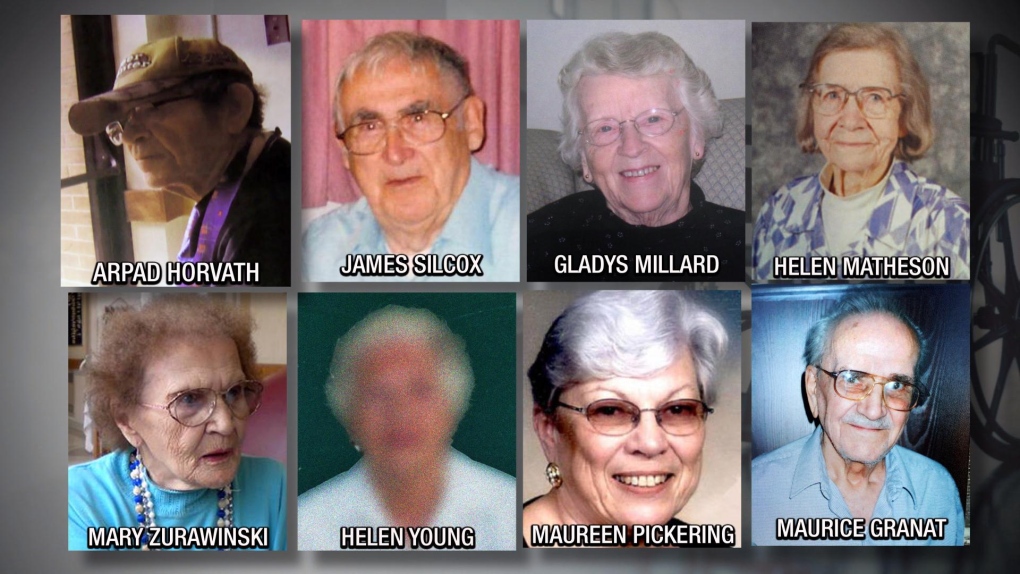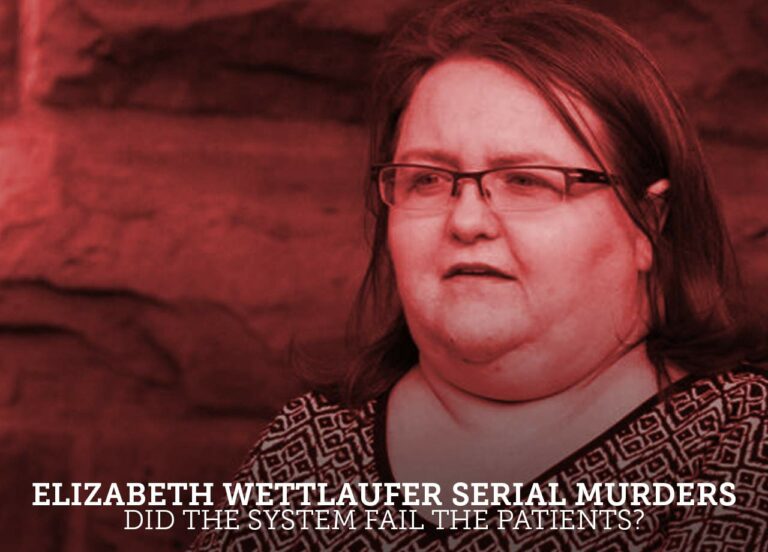A public inquiry into how serial killer, former registered nurse Elizabeth Wettlaufer, was able to get away with murder for nearly a decade started on June 5. Wettlaufer was found guilty of eight counts of murder, four counts of attempted murder and two cases of aggravated assault against elderly patients by injecting them with insulin. She will probably spend the rest of her life in jail.
The inquiry is not about what Wettlaufer did but instead about what others – employers, state agencies, and associations – did, or did not do, to allow this tragedy to unfold. The hearing is set to continue for several weeks. There are 17 different lawyers, representing several parties including families, community groups, Wettlaufer’s employers, College of Nurses Ontario (CNO) and the Ontario Nurses Association (ONA), the union which represented Wettlaufer.
“Our one and only mandate is to protect the public, and we owe it to Ontarians to clearly understand how this happened, and what systematic improvements can be made so that all of us working in healthcare are able to protect and care for our loved ones to the best of our ability,” stated the College of Nurses of Ontario (CNO), the registering and governing body for registered nurses in Ontario, Canada. “We look forward to contributing to the inquiry and it is our hope that its findings will help us all better understand what went wrong and how we can prevent tragedies like this from ever happening again.”
More about Wettlaufer
It appears that Wettlaufer was a troubled person. She grew up in a controlling and strictly religious family and, already in her teens, developed mental problems, issues with drug addiction and confusion about her sexual identity.
An affair with another woman led to her divorce in February 2017. The divorce appeared to have been a trigger for further mental health issues, she was still abusing drugs and said she was angry about her life and career.
She was able to get a job working night shifts at the long-term care home, Caressant Care. Shortly after that, she injected her first two victims with insulin, but they didn’t die. She killed her first victim in August 2007 and another six people until March 2014. By this time she had a long list of complaints, warnings, and suspensions against her name. She was eventually terminated due to a medication error – unrelated to the killings.

Wettlaufer still managed to get work at various long-term facilities through a nursing agency and killed another victim. She decided to leave nursing after the agency wanted to assign her to work with insulin-dependent children. She knew she couldn’t control her impulses and, after first wanting to run away to another city, she decided to face her actions. Wettlaufer booked into the Centre for Addiction and Mental Health where she confessed to her crimes and was later arrested.
Wettlaufer failed to explain why she killed. In her confession to the police, she said that she was never under the influence of drugs or alcohol when she murdered. She explained that a “red surge” would come across her when she was about to kill and that she often experienced a laughing feeling in the stomach afterward. One of her killings was precipitated when the elderly patient expressed that she believed that she was going to die that night.
Red flags and system failures
Only days into the inquiry, it was already apparent that there were many ignored red flags and system failures. If the deaths had been properly reported and investigated, or issues around Wettlaufer’s’ conduct had not been swept under the carpet — many of the deaths could have been prevented.
Here are some of the red flags and systems failures which have come to light thus far:
• She was terminated from her first nursing position in 1995 after having stolen drugs and being found in a drugged state. With union intervention, the termination was changed to voluntary resignation. Her transgression was not brought to the attention of the CNO
• She sought help on various occasions. She told a former girlfriend about her actions in 2008. It appears the friend did not believe her and thought the story was related to her mental health issues. She also told a lawyer who advised her to keep it a secret. Wettlaufer also confessed to a pastor and his wife in 2013, after which they prayed for her and told her that they would have to report her if she did it again.
• The death of Wettlaufer’s first victim was described by the emergency room doctor as suspicious and reported to the coroner, but an autopsy was not performed.
Again in 2014, after a doctor found fatally low blood sugar consistent with an insulin overdose in another victim, the death was reported to the coroner, but the call went unheeded, and no autopsy was done. The insulin overdoses of patients that survived were also not reported to the Ministry of Health and Long-Term Care as is required.
• Wettlaufer was hired at Caressant Care without a meaningful job interview. She was taken on a tour of the facility, informed of her duties and hired then and there. “She was eager, she was happy, she was a minister’s daughter,” testified Helen Crombez, the facility’s former Director of Nursing. “I thought we were blessed to have her walk through the door.”
• While working at Caressant Wettlaufer stole hydromorphone (Dilaudid) to feed her continuing drug addiction. It took months before anyone noticed that drugs were missing. Wettlaufer confessed that when police called, she “played dumb.”
• During her time at the center, there were many issues with her absenteeism, lateness, treatment of staff and patients, as well as numerous medication errors.
• She was reprimanded and suspended numerous times, but her union would file grievances. Brenda Van Quaethem, an administrator at the facility, testified that the CNO made it difficult to reprimand or terminate Wettlaufer. It was simpler and cheaper not to fight the union and issue warnings instead. She also testified that because of the nursing shortage, the facility found it challenging to recruit and retain staff, especially for night shifts.
• In August 2012, the care home threatened to report Wettlaufer to the CNO for a “fitness to practice” hearing but it was not followed through.
• She was reported by subordinates to Caressant administration for various incidents of incompetent practice. In one letter an RPN stated that other’s also wanted to report her but didn’t see the point as “She’s still here. Nothing ever happens.” Some of her co-workers referred to her as the “angel of death” because of inappropriate conversations she had with patients.
• When Caressant eventually fired Wettlaufer, the ONA again intervened, and her record of dismissal was changed to a voluntary resignation due to medical reasons. Wettlaufer was awarded a settlement as was given a letter of recommendation.
• Wettlaufer was reported to the CNO after the termination. However, only 6 of the 14 medication errors and 4 of the other 32 issues for which she had received warnings or was disciplined, were reported due to limited space on the report form. The CNO made a phone call to the facility, and the replies led them to drop the case. She remained in good standing with the registering body.
• One month after being terminated form Caressant Care Wettlaufer got work again. She told the employer that she had been fired for a medication error, but they said that they believed in second chances.
• Her new employer contacted the police when they suspected that she had stolen narcotics and it is not clear what happened with the police investigation. The incident was not reported to the CNO.
Remaining vigilant
In all areas of life, there are those who, for reasons that are difficult to understand, do not march according to the expected morals and values of society. As seen in the shocking story of Elizabeth Wettlaufer this is, unfortunately, no different in nursing.
Are nurses possibly overlooked more because it is the most trusted profession? To what extent was Wettlaufer able to continue working because of the persistent shortage of nurses? Are required procedures and processes slipping because of the pressures of the modern world? Were fewer questions asked because the victims were elderly, at an age where they are expected to die?
We should all be vigilant. If the behavior and standards of work of a colleague bother us, we should not be afraid to speak up – again and again, if necessary – in the interests of our patients.

